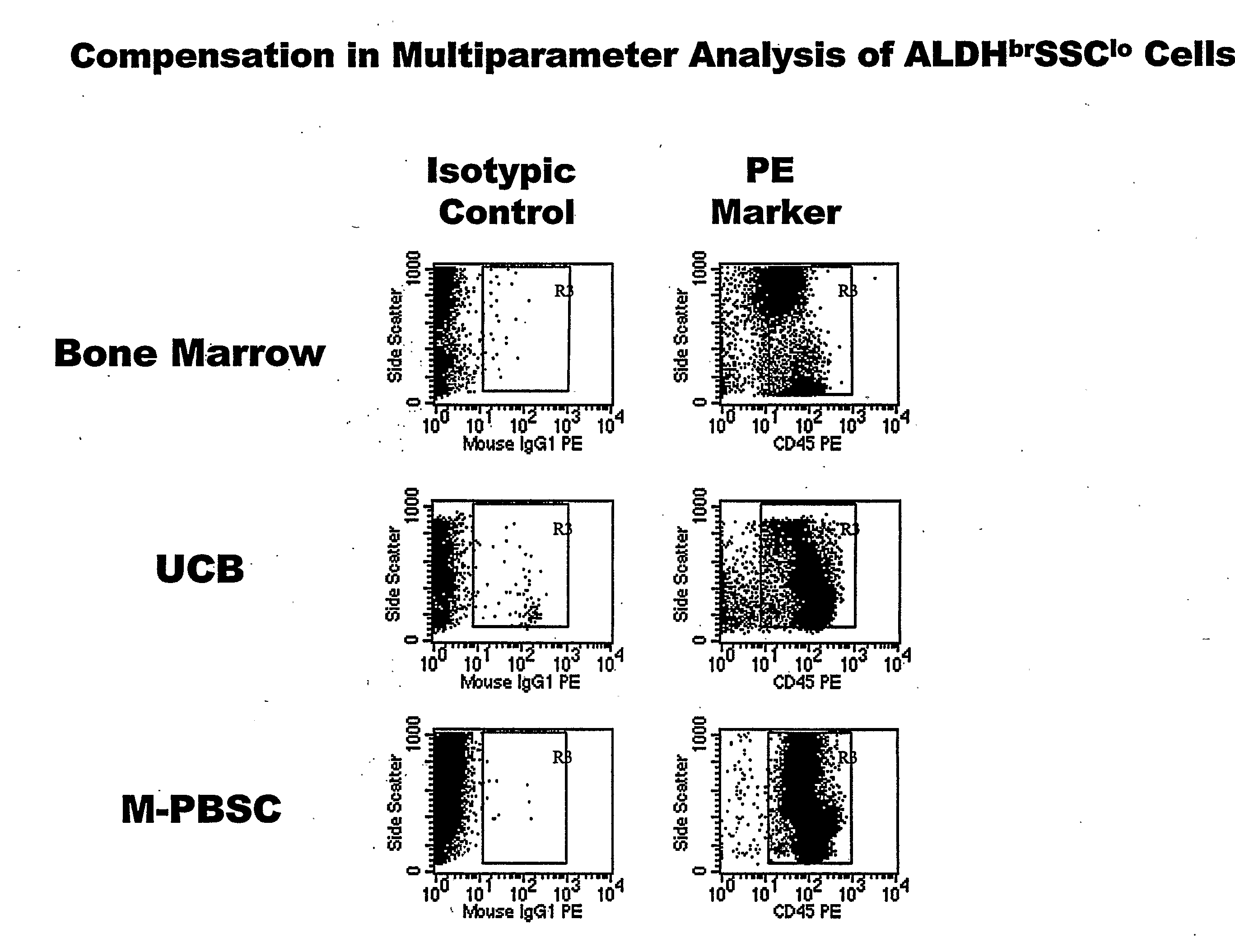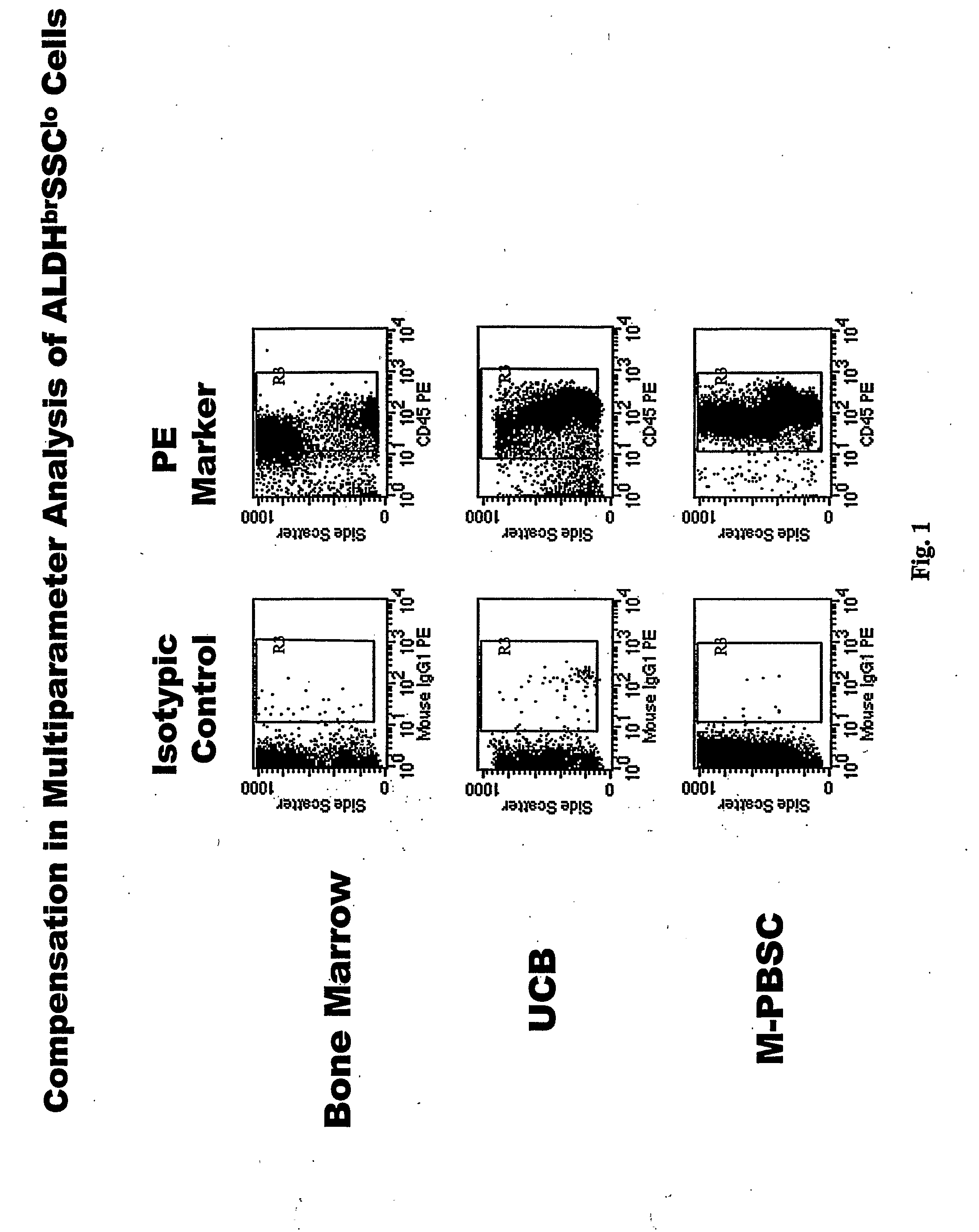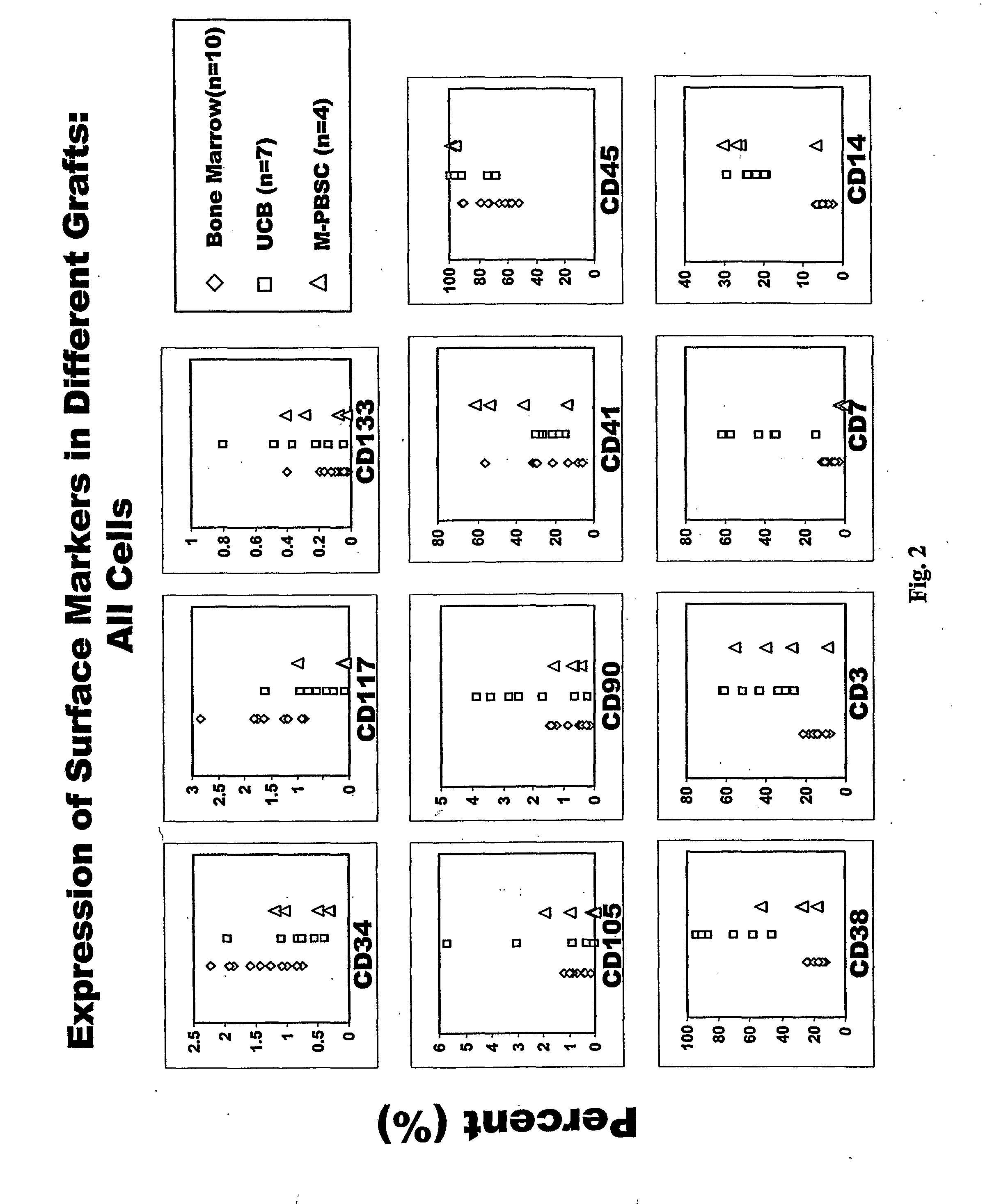Stem Cell Populations and Methods of Use
a technology of stem cells and populations, applied in the field of stem cell populations, can solve the problems of limited colony-forming ability, inability to effectively home, and progressively restricted development potential of stem cells
- Summary
- Abstract
- Description
- Claims
- Application Information
AI Technical Summary
Problems solved by technology
Method used
Image
Examples
example 1
Tissue Processing and Phenotyping
[0063]Directly conjugated fluorescent antibodies were employed for analyses of cell surface antigens. Those used included antibodies directed against CD3 (Leu4; Becton Dickinson clone SK7); CD7 (Leu9; Becton Dickinson clone M-T701); CD10 (Beckman Coulter / Immunotech clone ALB1); CD13 (Beckman Coulter / Immunotech clone SJ1D1); CD14 (Beckman Coulter / Immunotech clone RM052); CD19 (Leu12; Pharmingen clone WM15); CD33 (LeuM9; Becton Dickinson clone M-φP9); CD34 (Becton Dickinson clone 8G12); CD35 (Pharmingen clone E11); CD38 (Leu17; Becton Dickinson clone HB7); CD41 (Caltag clone VIPL3); CD45 (Miltenyi clone 5B1); CD56 (Leu19; Becton Dickinson clone My31); CD90 (Pharmingen; clone 5E10); CD105 (Caltag clone SN6); CD117 (Becton Dickinson clone 104D2); CD127 (Beckman Coulter / Immunotech clone R34.34); CD133 (Miltenyi clone AC 133); CD135 (Pharmingen clone 4G8); CD 138 (IQ products clone B-B4); HLA-DR (Becton Dickinson clone L243); and glyA (Becton Dickinson clo...
example 2
Visualization and Characterization of the ALDHbrSSClo Cells Having the Phenotype of Interest
[0074]For intracellular staining, FACS™ isolated ALDHbrSSClo cells having the phenotype of interest, as identified in Example 1, are stained using the Fix and Penn cell permeabilization kit according to the manufacturer's instructions (Caltag Laboratories). In preparation for differential Wright Giemsa staining, cells in PBS are pelleted for 3 minutes at 1000 rpm directly onto coated slides using a Cytospin3 centrifuge. The cells are stained with Wright Giemsa stain in an automated cell stainer.
example 3
Functional Characterization of ALDHbrSSClo, Cells Having the Phenotype of Interest Using In Vitro Culture
[0075]Hematopoietic progenitor colony HPC assays are performed by plating 100-200 ALDHbrSSClo cells having the phenotype of interest, as identified in Example 1, in MethoCult H4431 (StemCell Technologies, Inc.). The cells are incubated in a humidified chamber at 37° C. with 5% CO2. Hematopoietic colonies (>100 cells) are then scored at 14-18 days after initiating the cultures. See, for example, Fallon et al (2003) Br. J. Haematol. 121:1, herein incorporated by reference in its entirety.
[0076]Long-term culture (LTC) assays are performed by maintaining ALDHbrSSClo cells having the phenotype of interest, as identified in Example 1, on either irradiated allogeneic bone marrow stroma or stromal layers of murine MS-5 cells (Issaad et al. (1993) Blood 81:2916) or in some instances S17 cells (with medium containing Flt3 ligand, IL-3, erythropoietin, G-CSF, and IL-15) according to the met...
PUM
| Property | Measurement | Unit |
|---|---|---|
| Fraction | aaaaa | aaaaa |
| Fraction | aaaaa | aaaaa |
| Fraction | aaaaa | aaaaa |
Abstract
Description
Claims
Application Information
 Login to View More
Login to View More - R&D
- Intellectual Property
- Life Sciences
- Materials
- Tech Scout
- Unparalleled Data Quality
- Higher Quality Content
- 60% Fewer Hallucinations
Browse by: Latest US Patents, China's latest patents, Technical Efficacy Thesaurus, Application Domain, Technology Topic, Popular Technical Reports.
© 2025 PatSnap. All rights reserved.Legal|Privacy policy|Modern Slavery Act Transparency Statement|Sitemap|About US| Contact US: help@patsnap.com



